From Currency Fails to Whale Shark Tales: A Memorable Stop in Kaimana
We arrived in Kaimana just as night fell. From the boat, the city looked intriguing—colourful houses, mosques, and even a tiny fairground with a Ferris wheel flashing neon lights, blasting modern music mixed with prayers from multiple mosques. An oddly charming combo.
The music kept going until 2 a.m., leaving me with a severe case of FOMO. It’s a shame we never get to explore places after dark—no local nightlife, no street food feasts, no cheeky mocktail-fuelled misadventures. In Indonesia, life kicks off at 5 p.m. or later—even hairdressers don’t bother opening before then because, frankly, it’s too hot to function during the day. But safety first—being out with the dinghy at night has to be done with caution, especially when you don’t know the area.
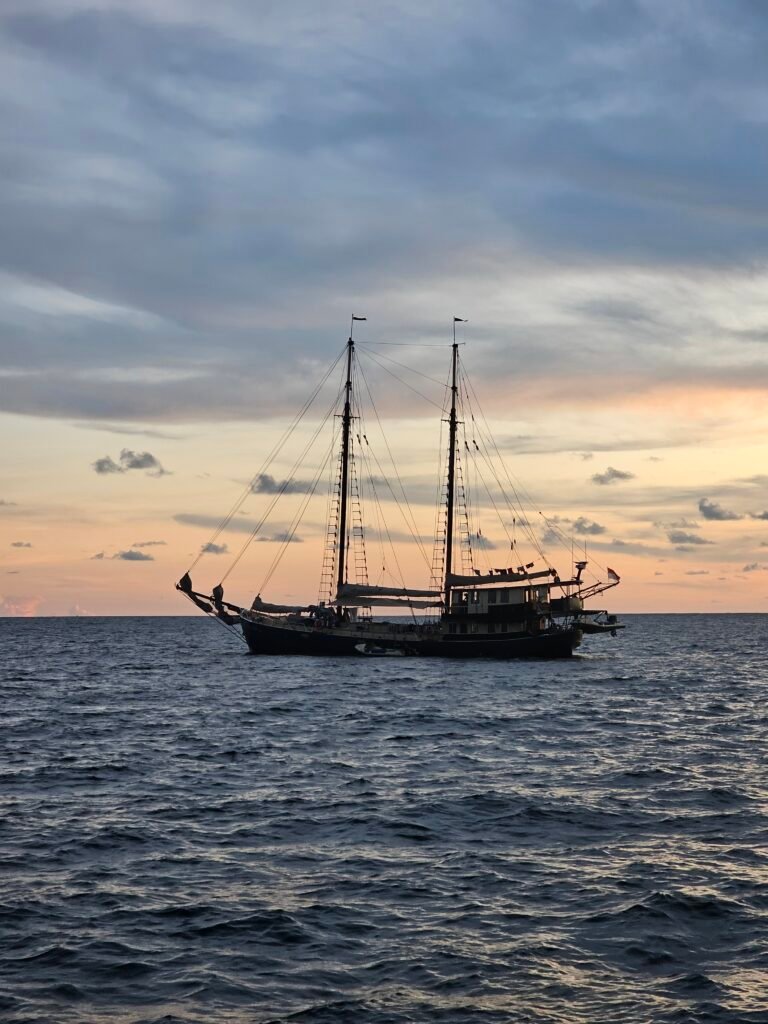
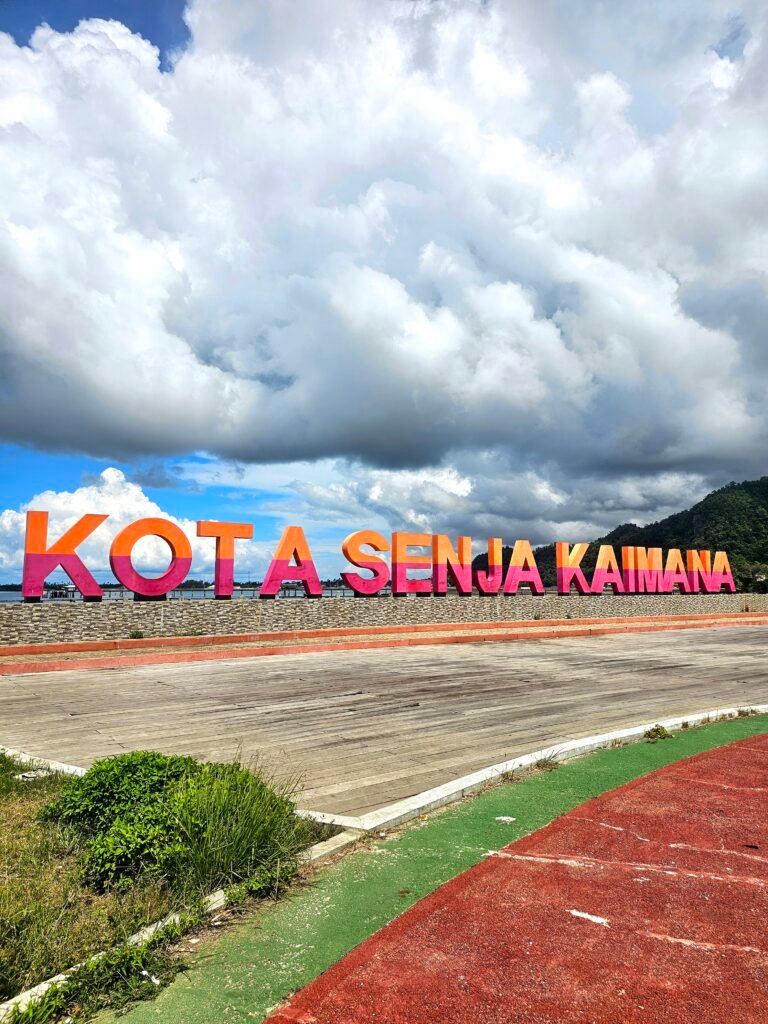
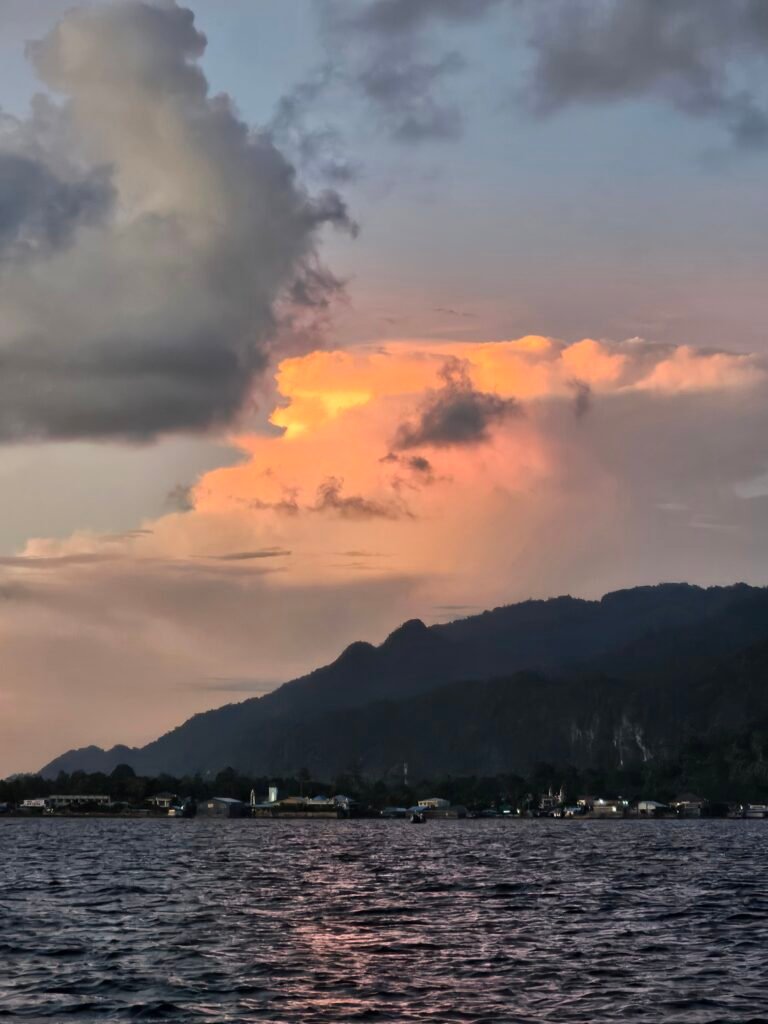
The next morning, we finally got our green book filled out with a quarantine stamp—another couple of hundred dollars gone, just like that. We were also given a link to apply (and, of course, pay) for our national park permit online. Around mid-morning, Mark and I were given a two-hour window to explore Kaimana.
First mission: exchange my New Zealand dollars. Several banks in town, yet none could exchange money. So, we had to withdraw cash with the credit card instead. In Indonesia, the exchange rate for cash isn’t great, and they’re ridiculously picky about the quality of notes—any writing, folds, or tiny tears, and your money is deemed unworthy. Taking out cash from an ATM is just easier and highly recommended. The opposite was true in the Pacific Islands, so I thought I was being clever by bringing heaps of NZD in cash. Turns out, not so much. I suppose if you arrive through an airport, it wouldn’t be an issue, but let’s be honest—the airport exchange rate always sucks.

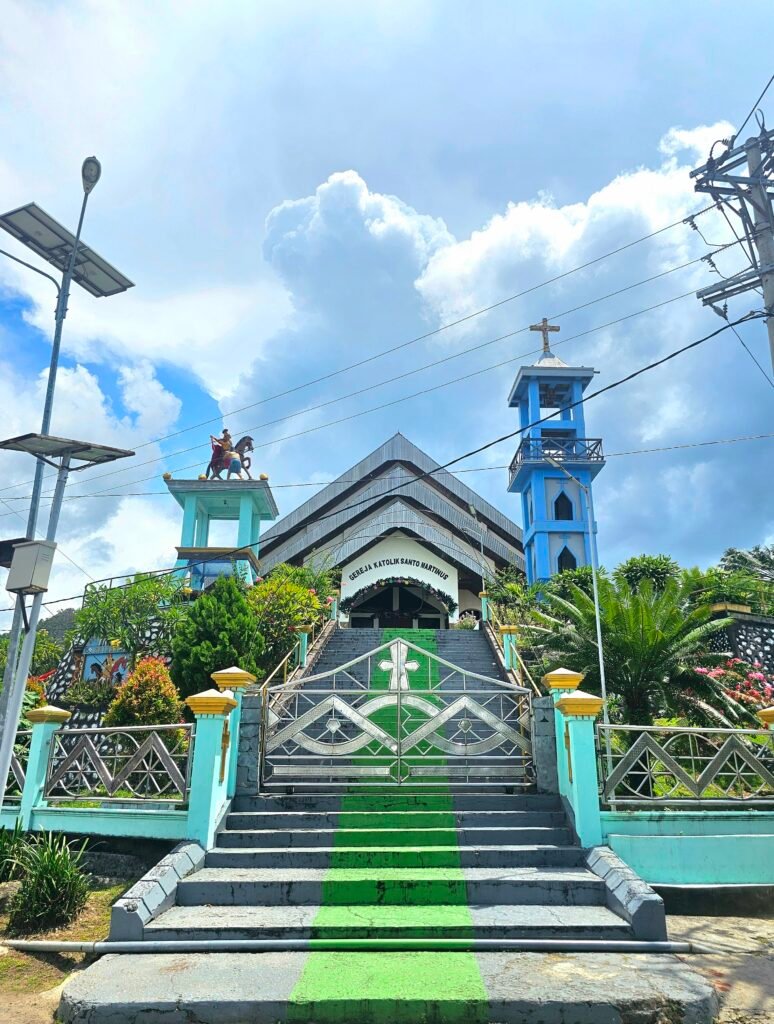
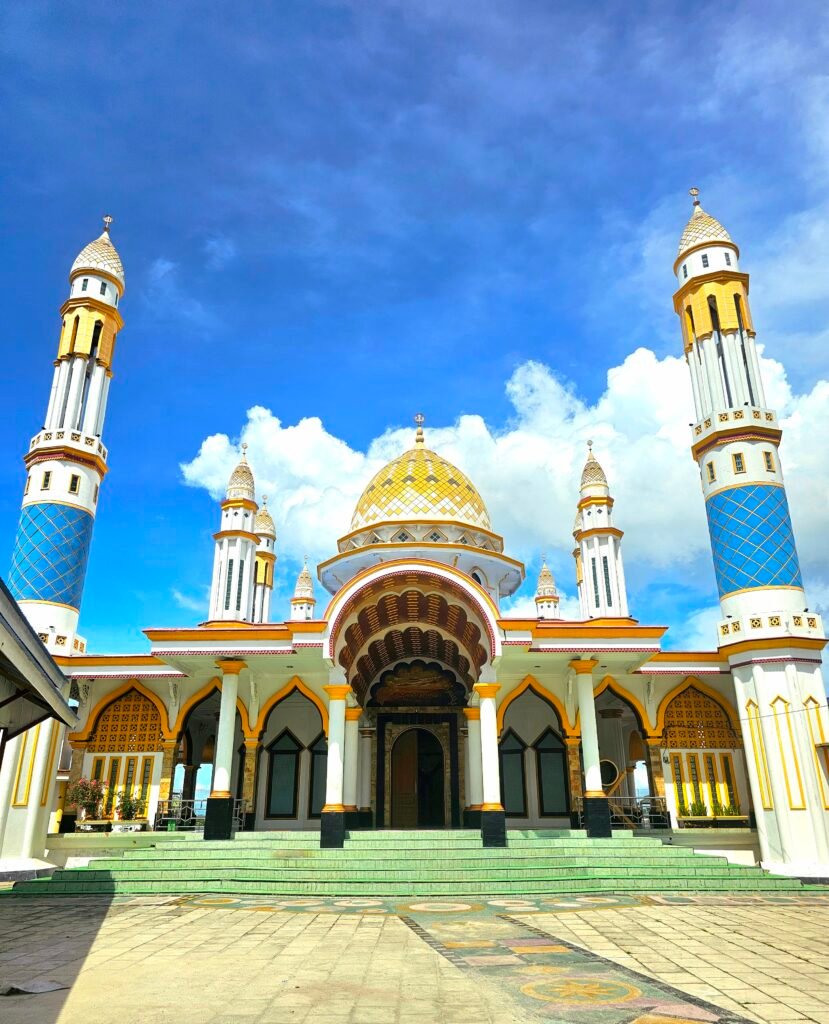
Kaimana itself was small, just a few little shops and stalls, but we were happy to stock up on fresh vegetables and fruit. The real highlight, however, came when school let out for siesta. Suddenly, we became the main attraction. Kids swarmed us, eager for photos and handshakes. Even mums joined in, dragging their little ones over for pictures. Clearly, tourists don’t frequent these parts—especially not the quiet alleyways we were strolling through. Everywhere we went, we heard excited shouts of “Bule!” (foreigner). Mark, in particular, was consistently addressed as “Mister,” which cracked us up every time.
It was honestly such a heartwarming experience—like being temporary celebrities, minus the red carpet but with plenty of paparazzi.
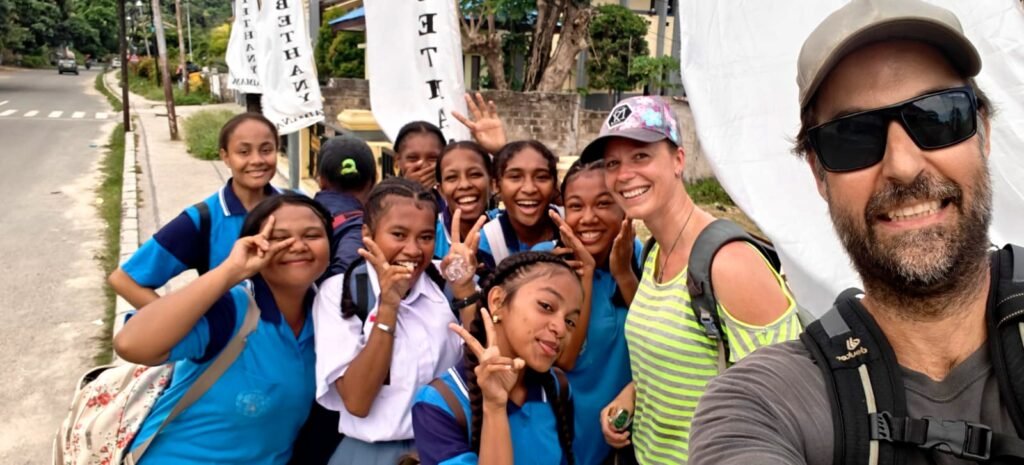
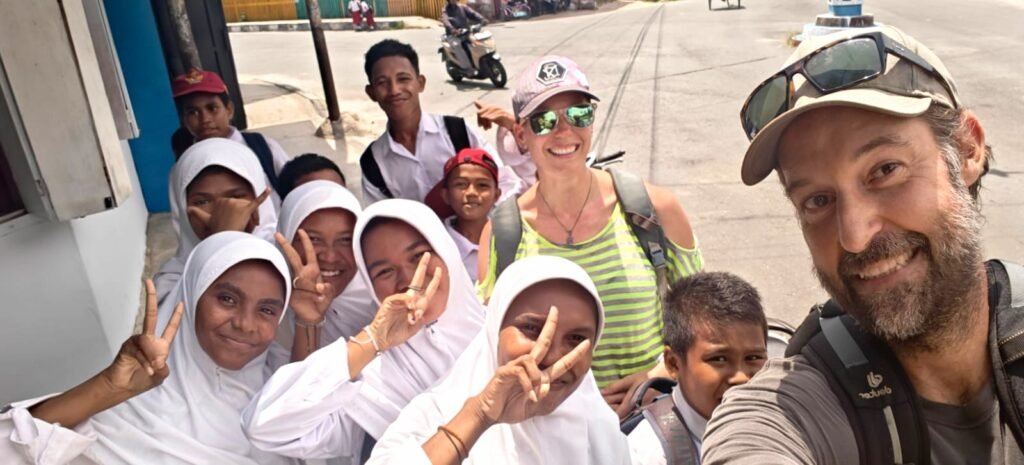
Now, onto the real action. We got a local tip that whale sharks tend to gather around these floating fish-attracting devices, so-called ‘Bagans,’ at around 5 a.m., when fishermen haul up their nets, hoping for a few bonus fish. The whale sharks visit Kaimana between November and March before moving on.
The next morning, we were up at 4 a.m., heading over to the Bagans, where plenty of fishermen were already at work. We asked if they had spotted any “Hius Paus”—whale sharks. One fisherman clambered down into his little boat, started splashing around with baskets, and began throwing fish into the water.
Suddenly, there was a LOT of splashing. To our surprise, a massive pod of dolphins showed up, having the time of their lives feasting on the fish. With the sun rising and birds swooping in for their share, it was already quite the spectacle.
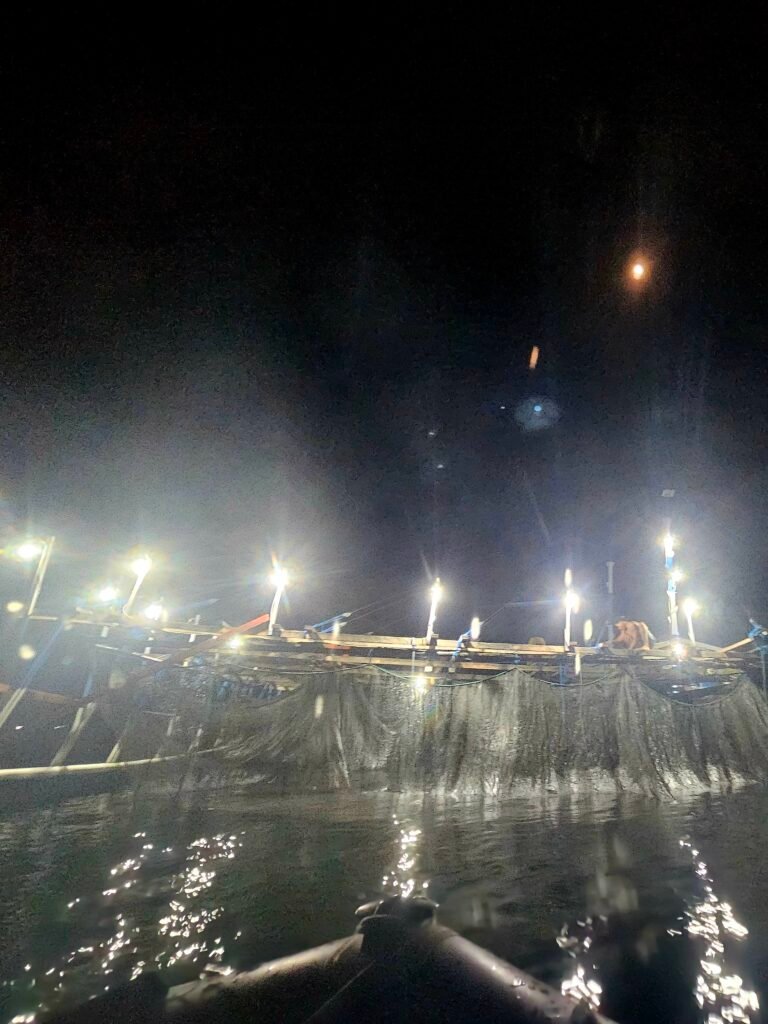
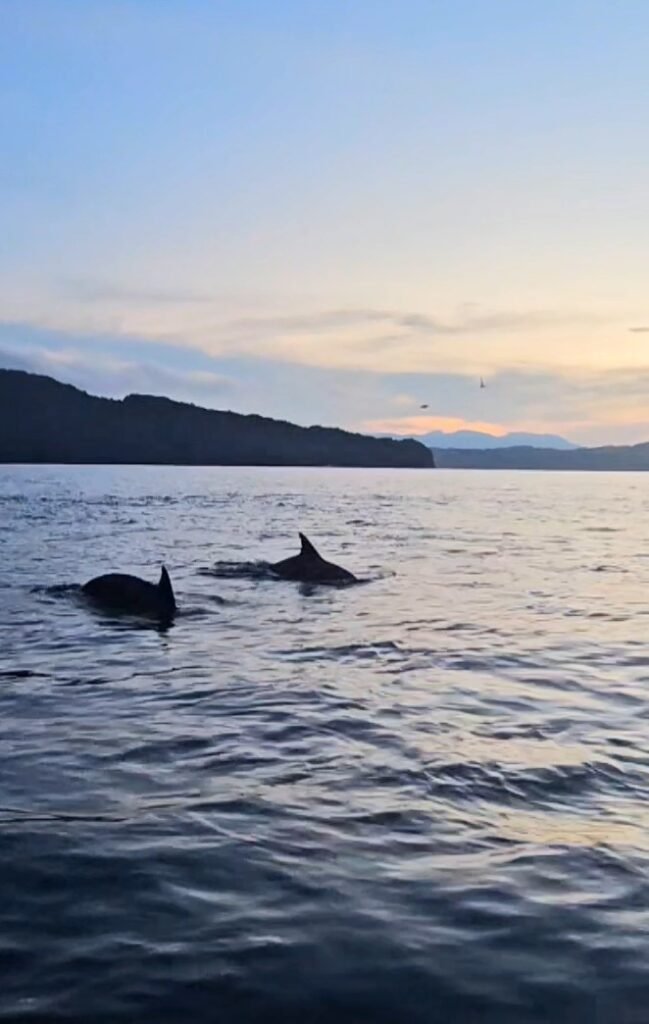
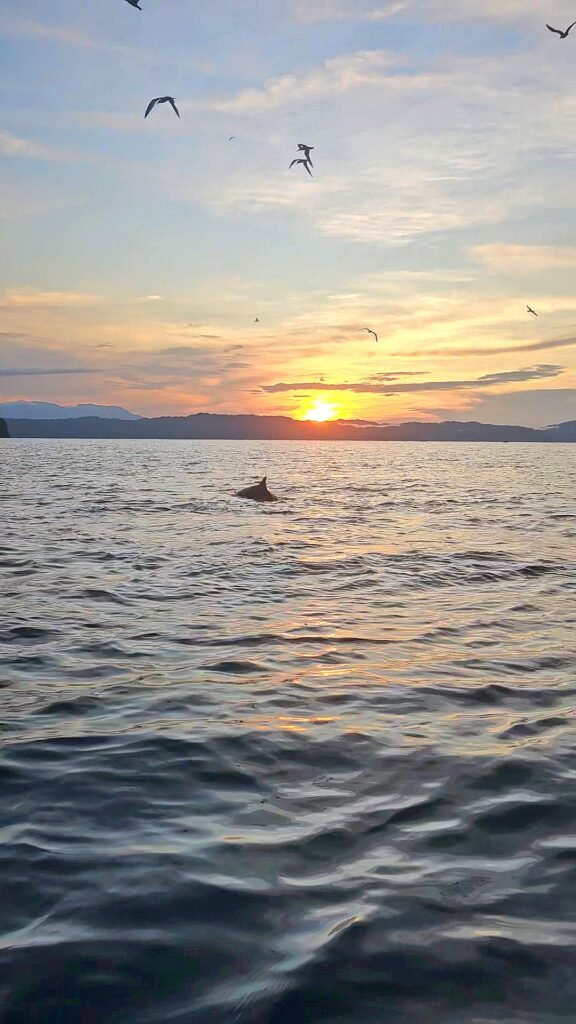
Then, all of a sudden, we heard “Hius Paus!” We turned around—and there it was. A giant whale shark swam straight towards our dinghy, stuck its head out as if to say, “Who are these weirdos?” and then made a beeline for the fishermen and their bucket of treats. WOW. Just WOW. We all let out a slightly nervous laugh before our brains could even register what was happening. The sheer size of the biggest fish in the world was absolutely jaw-dropping.
And then, just as we were wrapping our heads around the first one, a second whale shark appeared—even bigger!
Now, I won’t lie—having these colossal creatures, as big as a bus, gliding directly beneath our dinghy was mildly terrifying. But they were incredibly gentle, never once bumping the boat. It honestly felt like they were playing with the fishermen—splashing around, trying to get more fish, while the fishermen seemed to be having a great time too.
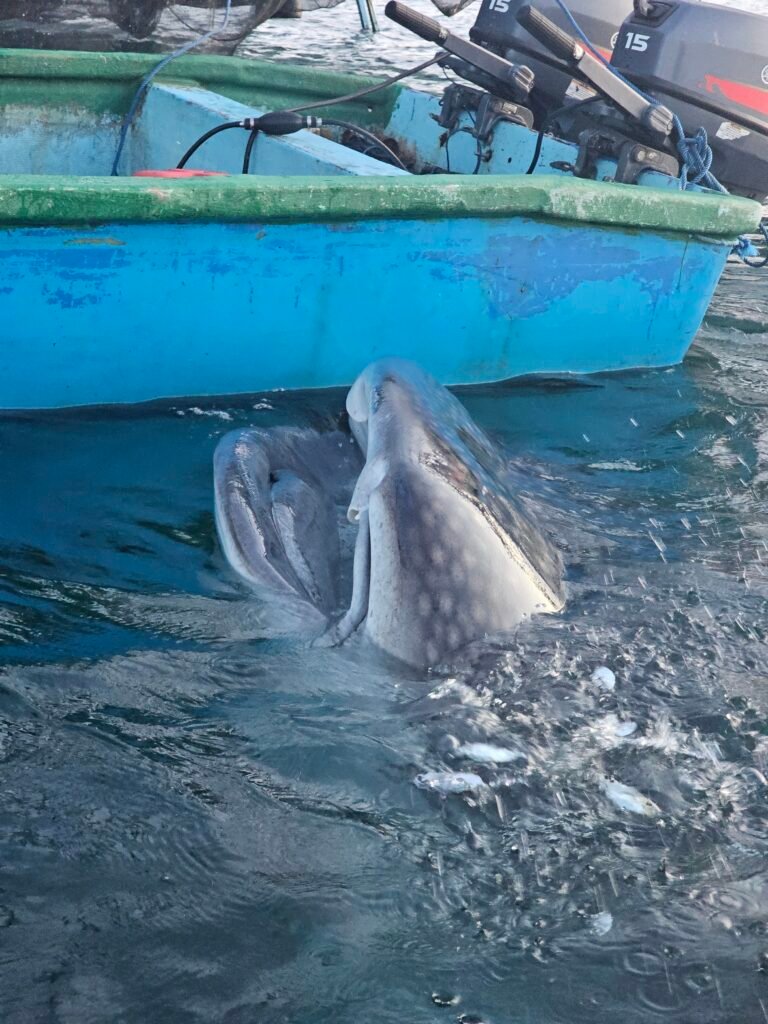
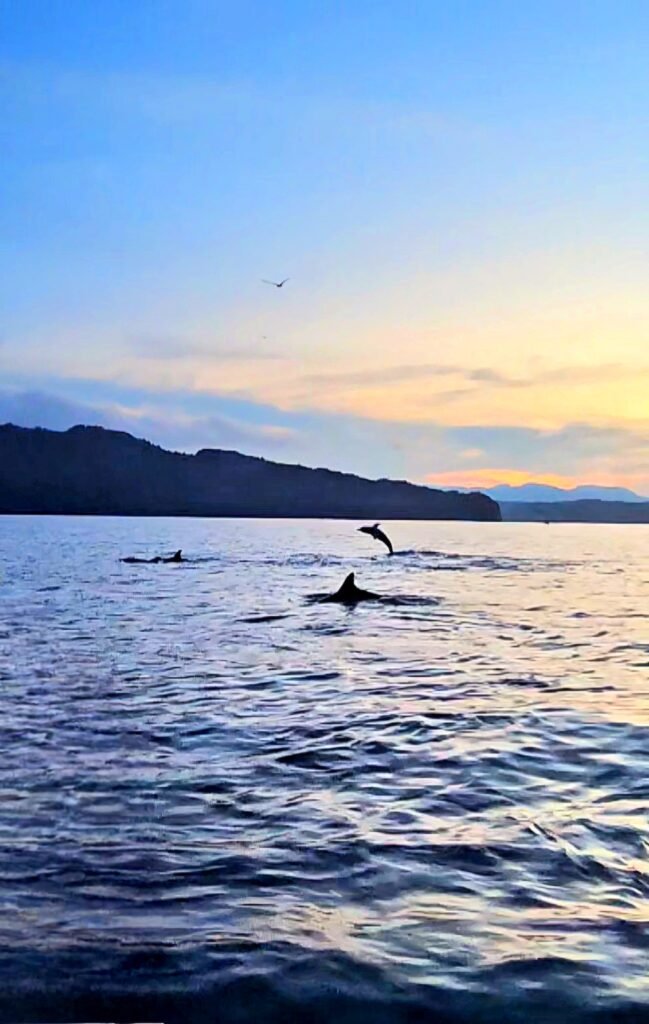
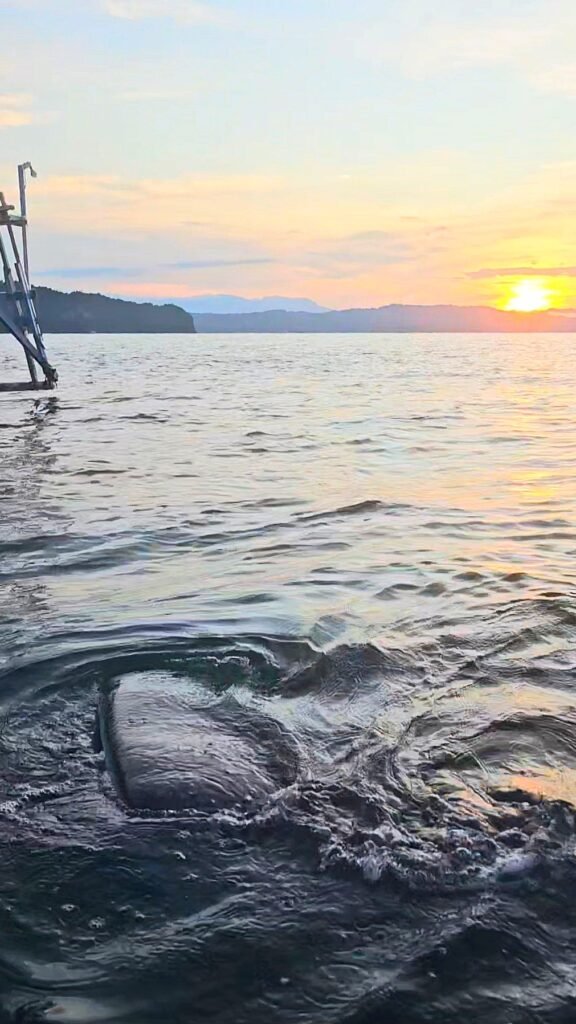
For an hour, we watched as the fishermen kept tossing fish into the water, while birds, dolphins, and whale sharks circled around us in this incredible feeding frenzy, all under the rising sun. This was, hands down, one of the most extraordinary experiences of my life. Sure, I’d love to see a whale shark while diving in the wild, but what we witnessed that morning sits firmly at the top of my list of unforgettable moments.
When we got back to our boat, some locals circled us, telling us we couldn’t anchor there. But our skipper had already cleared it with a local contact, who assured us it was fine. Either way, we decided to head off straight away to a little village called Lobo, en route to Triton Bay for round two—might as well get our money’s worth from that national park permit!
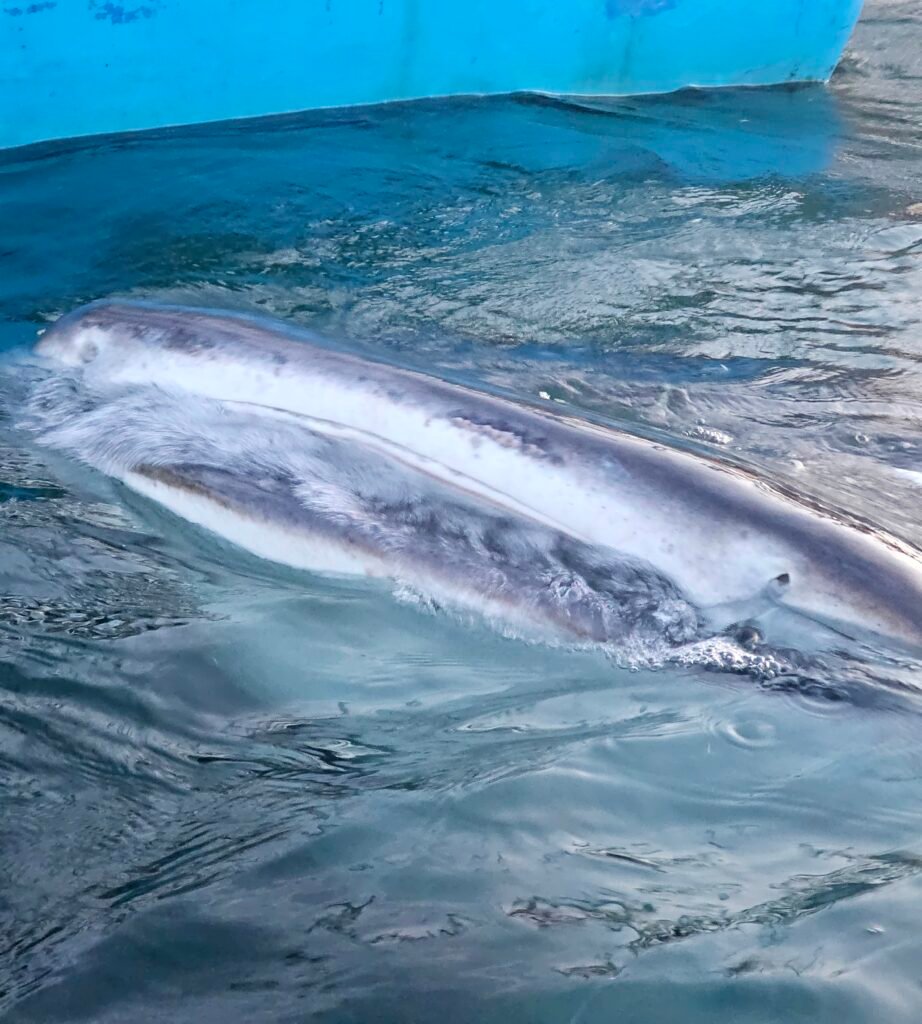
On another note, I later learned that whale shark tourism, as practised for example in the Philippines, is hugely harmful to these animals. Feeding them to attract them messes with their natural behaviour. Whale sharks actually stop migrating if they realise they get enough food in one spot, which disrupts entire marine ecosystem. Also, touching them removes their protective mucus, leaving them vulnerable to infections. And another major issue is that they get too comfortable around boats and humans, which has tragically led to fatal boat strikes.
So, I’ve tweaked this post a bit, leaving out some details about how we actually went about seeing them. It wasn’t as simple as just rocking up to the Bagans in the morning, but I don’t want others to copy or encourage this kind of interaction, especially since it’s thankfully not touristy yet. Truth be told, I’m not proud that the fishermen fed them just so we could get a closer look, and I’m glad we didn’t swim with them. Live and learn.
